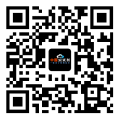详细说明
Species Reactivity
Mouse
Specificity
Detects mouse ST2/IL-33 R in ELISAs.
Source
Monoclonal Rat IgG 2B Clone # 245707
Purification
Protein A or G purified from hybridoma culture supernatant
Immunogen
S. frugiperda insect ovarian cell line Sf 21-derived recombinant mouse ST2/IL-33 R
Ser27-Arg332
Accession # P14719Formulation
Lyophilized from a 0.2 μm filtered solution in PBS with Trehalose. *Small pack size (SP) is supplied as a 0.2 µm filtered solution in PBS.
Label
Unconjugated
Applications
Recommended
ConcentrationSample
Flow Cytometry
0.25 µg/10 6 cells
See below
CyTOF-ready
Ready to be labeled using established conjugation methods. No BSA or other carrier proteins that could interfere with conjugation.
Mouse ST2/IL-33 R Sandwich Immunoassay
Reagent
ELISA Capture (Matched Antibody Pair)
2-8 µg/mL
Mouse ST2/IL-33 R Antibody (Catalog # )
ELISA Detection (Matched Antibody Pair)
0.1-0.4 µg/mL
Mouse ST2/IL-33 R Biotinylated Antibody (Catalog # )
ELISA Standard
Recombinant Mouse ST2/IL-33 R Fc Chimera Protein, CF (Catalog # )
Neutralization
Measured by its ability to neutralize IL‑33-induced proliferation in the D10.G4.1 mouse helper T cell line. Schmitz, J. et al. (2005) Immunity 23:479. The Neutralization Dose (ND 50) is typically 0.5-3 ug/mL in the presence of 1 ng/mL Recombinant Human IL‑33.
Please Note: Optimal dilutions should be determined by each laboratory for each application. are available in the Technical Information section on our website.
Data Examples
Flow Cytometry | Detection of ST2/IL-33 R in P815 Mouse Cell Line by Flow Cytometry. P815 mouse mastocytoma cell line was stained with Rat Anti-Mouse ST2/IL-33 R Monoclonal Antibody (Catalog # MAB10041, filled histogram) or isotype control antibody (Catalog # , open histogram), followed by Allophycocyanin-conjugated Anti-Rat IgG F(ab')2 Secondary Antibody (Catalog # ). |
Neutralization | Cell Proliferation Induced by IL‑33 and Neutralization by Mouse ST2/IL-33 R Antibody. Recombinant Human IL‑33 induces proliferation in the D10.G4.1 mouse helper T cell line in a dose-dependent manner (orange line), as measured by the Resazurin (Catalog # ). Under these conditions, proliferation elicited by IL‑33 is neutralized (green line) by increasing concentrations of Rat Anti-Mouse ST2/IL-33 R Monoclonal Antibody (Catalog # MAB10041). The ND50 is typically 0.5-3 μg/mL. |
Preparation and Storage
Reconstitution
Reconstitute at 0.5 mg/mL in sterile PBS.
Shipping
The product is shipped at ambient temperature. Upon receipt, store it immediately at the temperature recommended below. *Small pack size (SP) is shipped with polar packs. Upon receipt, store it immediately at -20 to -70 °C
Stability & Storage
Use a manual defrost freezer and avoid repeated freeze-thaw cycles.
12 months from date of receipt, -20 to -70 °C as supplied.
1 month, 2 to 8 °C under sterile conditions after reconstitution.
6 months, -20 to -70 °C under sterile conditions after reconstitution.
Background: ST2/IL-33 R
ST2, also known as IL-1 R4 and T1, is an Interleukin-1 receptor family glycoprotein that contributes to Th2 immune responses (1, 2). Mouse ST2 consists of a 306 amino acid (aa) extracellular domain (ECD) with three Ig-like domains, a 23 aa transmembrane segment, and a 212 aa cytoplasmic domain with an intracellular TIR domain (3). Alternate splicing of the 120 kDa mouse ST2 generates a soluble 60 kDa isoform that lacks the transmembrane and cytoplasmic regions (3). Within the ECD, mouse ST2 shares 68% and 81% aa sequence identity with human and rat ST2, respectively. ST2 is expressed on the surface of mast cells, activated Th2 cells, macrophages, and cardiac myocytes (4‑7). It binds IL-33, a cytokine that is up‑regulated by inflammation or mechanical strain in smooth muscle cells, airway epithelia, keratinocytes, and cardiac fibroblasts (4, 8). IL-33 binding induces the association of ST2 with IL-1R AcP, a shared signaling subunit that also associates with IL-1 RI and IL-1 R rp2 (1, 9, 10). In macrophages, ST2 interferes with signaling from IL-1 RI and TLR4 by sequestering the adaptor proteins MyD88 and Mal (6). In addition to its role in promoting mast cell and Th2 dependent inflammation, ST2 activation enhances antigen induced hypernociception and protects from atherosclerosis and cardiac hypertrophy (4, 11‑13). The soluble ST2 isoform is released by activated Th2 cells and strained cardiac myocytes and is elevated in the serum in allergic asthma (5, 7, 14). Soluble ST2 functions as a decoy receptor that blocks IL-33’s ability to signal through transmembrane ST2 (9, 12‑14).
References:
Barksby, H.E. et al. (2007) Clin. Exp. Immunol. 149:217.
Gadina, M. and C.A. Jefferies (2007) Science STKE 2007:pe31.
Yanagisawa, K. et al. (1993) FEBS Lett. 318:83.
Schmitz, J. et al. (2005) Immunity 23:479.
Lecart, S. et al. (2002) Eur. J. Immunol. 32:2979.
Brint, E.K. et al. (2004) Nat. Immunol. 5:373.
Weinberg, E.O. et al. (2002) Circulation 106:2961.
Sanada S. et al. (2007) J. Clin. Invest. 117:1538
Palmer, G. et al. (2008) Cytokine 42:358.
Chackerian, A.A. et al. (2007) J. Immunol. 179:2551.
Allakhverdi, Z. et al. (2007) J. Immunol. 179:2051.
Verri Jr., W.A. et al. (2008) Proc. Natl. Acad. Sci. 105:2723.
Miller, A.M. et al. (2008) J. Exp. Med. 205:339.
Hayakawa, H. et al. (2007) J. Biol. Chem. 282:26369.
Long Name:
Interleukin 33 Receptor
Entrez Gene IDs:
9173 (Human); 17082 (Mouse)
Alternate Names:
DER4; Fit-1; IL-1 R4; IL1R4; IL-1R4; IL-1RL1; IL-33R; Ly84; ST2; ST2L; ST2V; suppression of tumorigenicity 2; T1











 粤公网安备44196802000105号
粤公网安备44196802000105号